Discover the ultimate French patisserie recipes, from buttery croissants to delicate macarons, creamy éclairs, layered mille-feuille, and luxurious opera cake. Step-by-step guides, variations, drink pairings, and expert tips to bring authentic French pastries to your kitchen
Introduction: The Timeless Charm of French Patisserie
French patisserie represents far more than just desserts—it is a celebration of artistry, flavor, and centuries-old culinary tradition. From the bustling cafés of Paris to the charming bakeries of small French towns, French patisserie has influenced global cuisine and inspired generations of chefs and dessert lovers. The buttery layers of a croissant, the delicate crunch and creamy filling of a macaron, the elegant smoothness of an éclair, the intricate layers of a mille-feuille, and the refined sophistication of an opera cake are all hallmarks of French patisserie—symbols of French culinary excellence and cultural artistry.
What sets French patisserie apart is not only its taste but the meticulous techniques and craftsmanship behind every creation. From laminating dough for the perfect croissant to whipping ganache for rich fillings, French patisserie demands patience, precision, and creativity. Each pastry is a testament to centuries of innovation, history, and tradition, making French patisserie both a culinary pursuit and an art form.
For home bakers and dessert enthusiasts alike, exploring French patisserie offers a unique opportunity to experience history and indulgence in every bite. Mastering French patisserie recipes allows you to recreate the flavors and elegance of France in your own kitchen, bringing sophistication and joy to every meal or special occasion. This guide will provide complete French patisserie recipes, expert baking tips, serving suggestions, and ideal drink pairings to enhance your pastry experience. Whether you’re preparing a buttery croissant for breakfast, a delicate macaron for a tea party, or an elaborate mille-feuille for a celebration, French patisserie promises to elevate your culinary journey and delight every palate.
By embracing the techniques and flavors of French patisserie, you are not just baking—you are stepping into a world where tradition meets innovation, artistry meets flavor, and every dessert tells a story. With this guide, you will learn how to create authentic French patisserie masterpieces that embody the charm, elegance, and timeless appeal of France’s most beloved desserts.
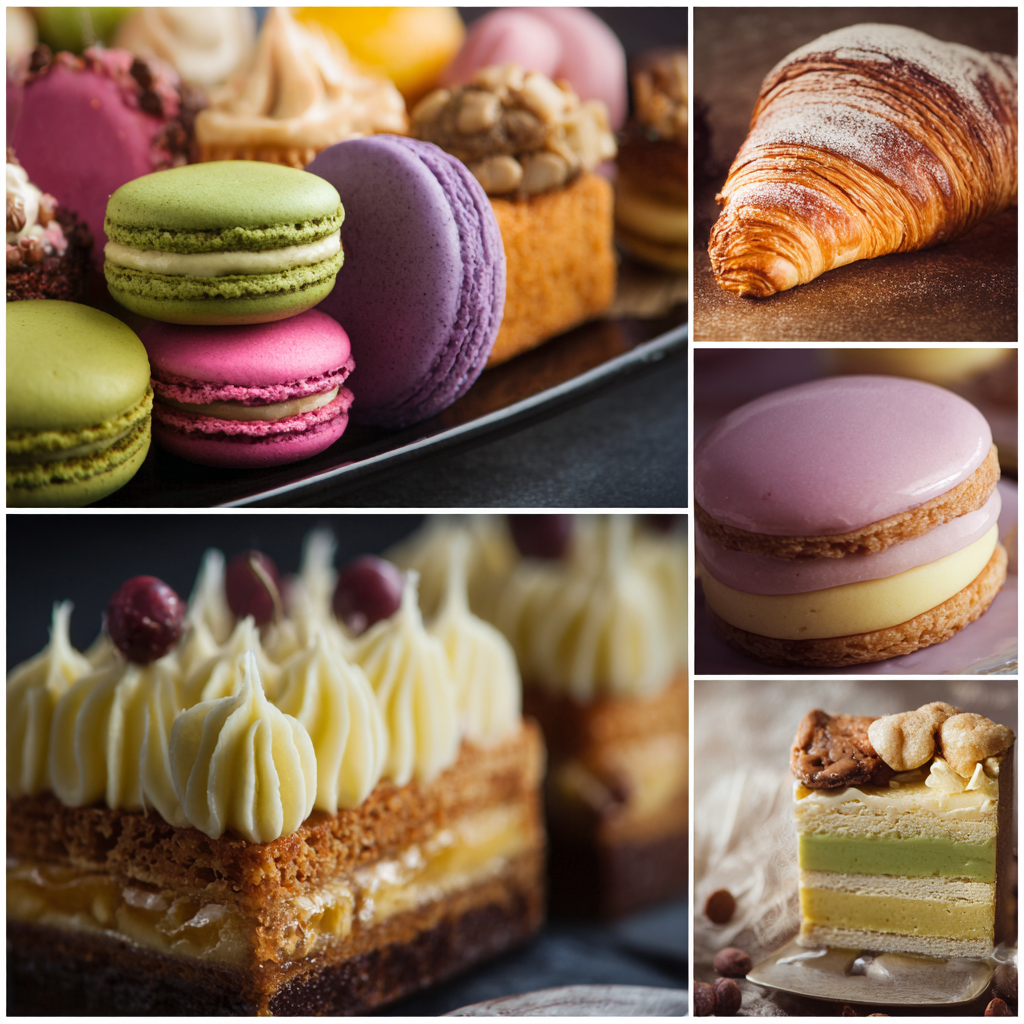
🥐 Croissant – The Buttery, Flaky French Breakfast Classic
History
Croissants originated from the Austrian kipferl but were perfected in France. By the 19th century, they had become the symbol of Parisian mornings, celebrated for their buttery, laminated layers.
Ingredients
- 4 cups all-purpose flour
- 1 cup warm milk
- 1/2 cup sugar
- 1 tbsp active dry yeast
- 1 tsp salt
- 1 1/4 cups unsalted butter (cold)
- 1 egg (for egg wash)
Instructions
- Prepare Dough: Mix flour, sugar, salt, yeast, and milk into a soft dough. Chill 1 hour.
- Laminate Dough: Roll dough, insert cold butter, fold, and repeat rolling & folding 3–4 times with chilling between folds.
- Shape Croissants: Cut into triangles, roll into crescents, place on tray.
- Proof: Let rise until doubled (1–2 hours).
- Bake: Brush with egg wash and bake at 400°F (200°C) for 15–20 minutes.
Tips & Variations
- Pain au Chocolat: Add chocolate batons before rolling.
- Almond Croissant: Fill with almond cream and sprinkle sliced almonds.
- Keep butter cold to ensure flaky layers.
Drink Pairings
- Café au Lait – Creamy coffee balances buttery croissant.
- French Hot Chocolate (Chocolat Chaud) – Rich and indulgent.
- Fresh Orange Juice – Adds bright, refreshing contrast.
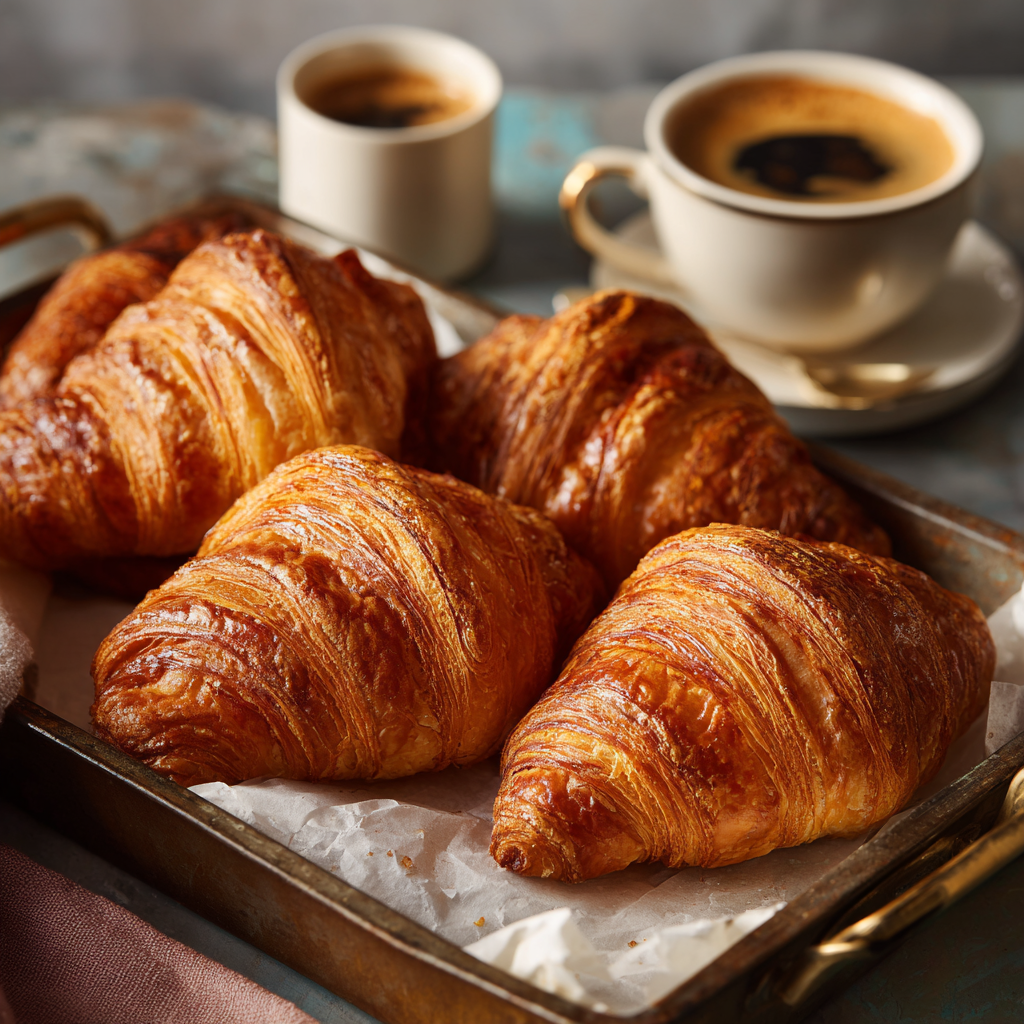
🍬 Macaron – The Elegant French Cookie
History
Macarons were introduced to France from Italy and perfected in Parisian patisseries. Ladurée and Pierre Hermé elevated them into colorful, luxurious treats with crisp shells and soft centers.
Ingredients
- 1 cup almond flour
- 1 3/4 cups powdered sugar
- 3 egg whites (room temperature)
- 1/4 cup granulated sugar
- Food coloring (optional)
- Filling: ganache, buttercream, or jam
Instructions
- Sift almond flour and powdered sugar.
- Beat egg whites until stiff peaks, gradually adding sugar.
- Fold dry mix into meringue (lava-like texture).
- Pipe uniform circles on parchment, rest 30 minutes.
- Bake at 300°F (150°C) for 12–15 minutes.
- Sandwich with buttercream, ganache, or jam; refrigerate 24 hours.
Tips & Variations
- Flavors: Pistachio, chocolate, raspberry, lemon, lavender.
- Let shells rest before baking for perfect “feet.”
- Store in fridge for up to 5 days.
Drink Pairings
- Earl Grey Tea – Floral and fragrant with fruity macarons.
- Champagne / Sparkling Juice – Elegant and celebratory.
- Matcha Latte – Earthy notes balance almond sweetness.
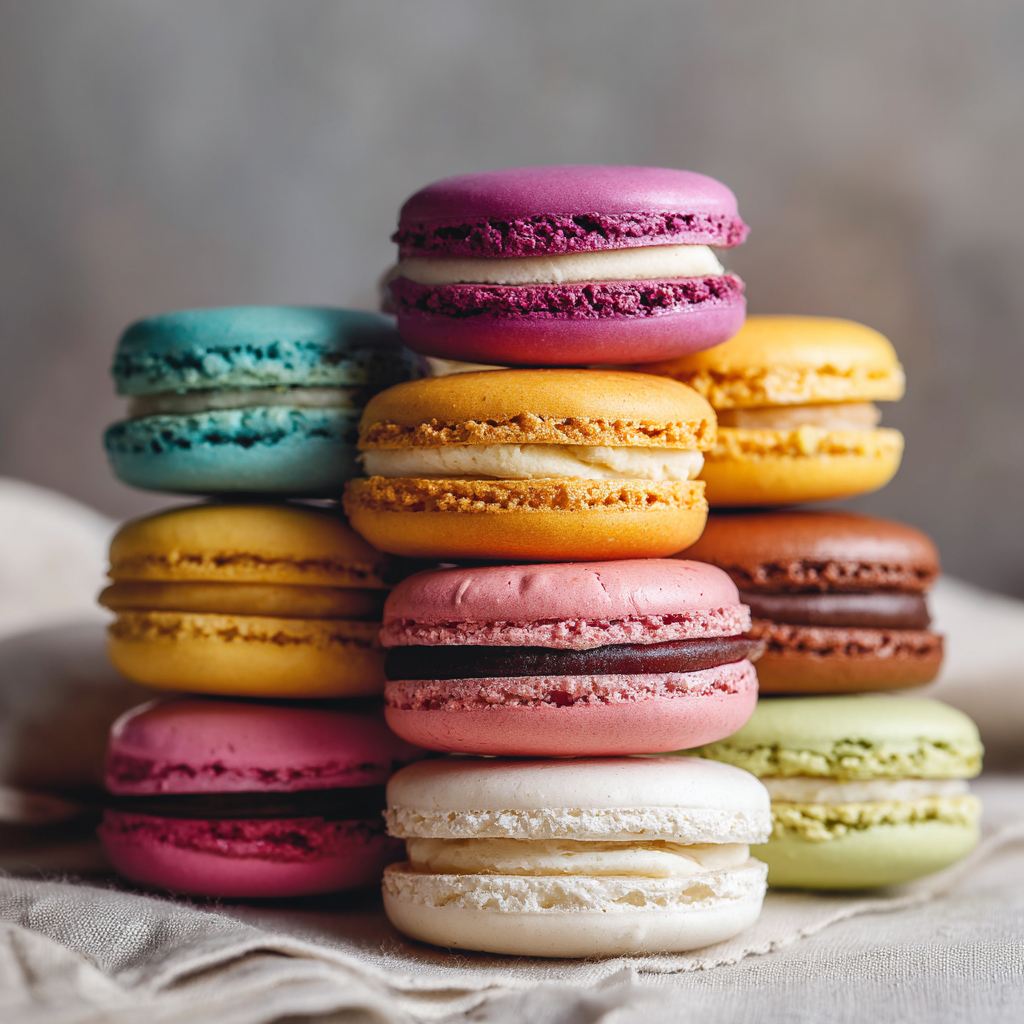
🍫 Éclair – The Iconic French Choux Pastry
History
The éclair, meaning “flash of lightning,” is a cream-filled choux pastry topped with icing. Crafted in 19th-century France, it is both a café favorite and a testament to French pastry technique.
Ingredients
- 1 cup water
- 1/2 cup unsalted butter
- 1 cup flour
- 4 eggs
- Pastry cream (vanilla, chocolate, coffee)
- Chocolate icing or fondant
Instructions
- Boil water and butter, add flour to form dough. Cool slightly.
- Beat in eggs one at a time until glossy.
- Pipe logs onto tray; bake at 375°F (190°C) for 25–30 minutes.
- Cool, pipe in pastry cream.
- Dip tops in chocolate or fondant icing.
Tips & Variations
- Flavors: Vanilla, mocha, pistachio, caramel.
- Do not open oven mid-bake; steam keeps pastry puffed.
- Best eaten the same day.
Drink Pairings
- Espresso – Cuts through sweetness of cream.
- Cappuccino – Creamy complement to chocolate or vanilla.
- Black Tea (Darjeeling or Assam) – Balances rich filling.
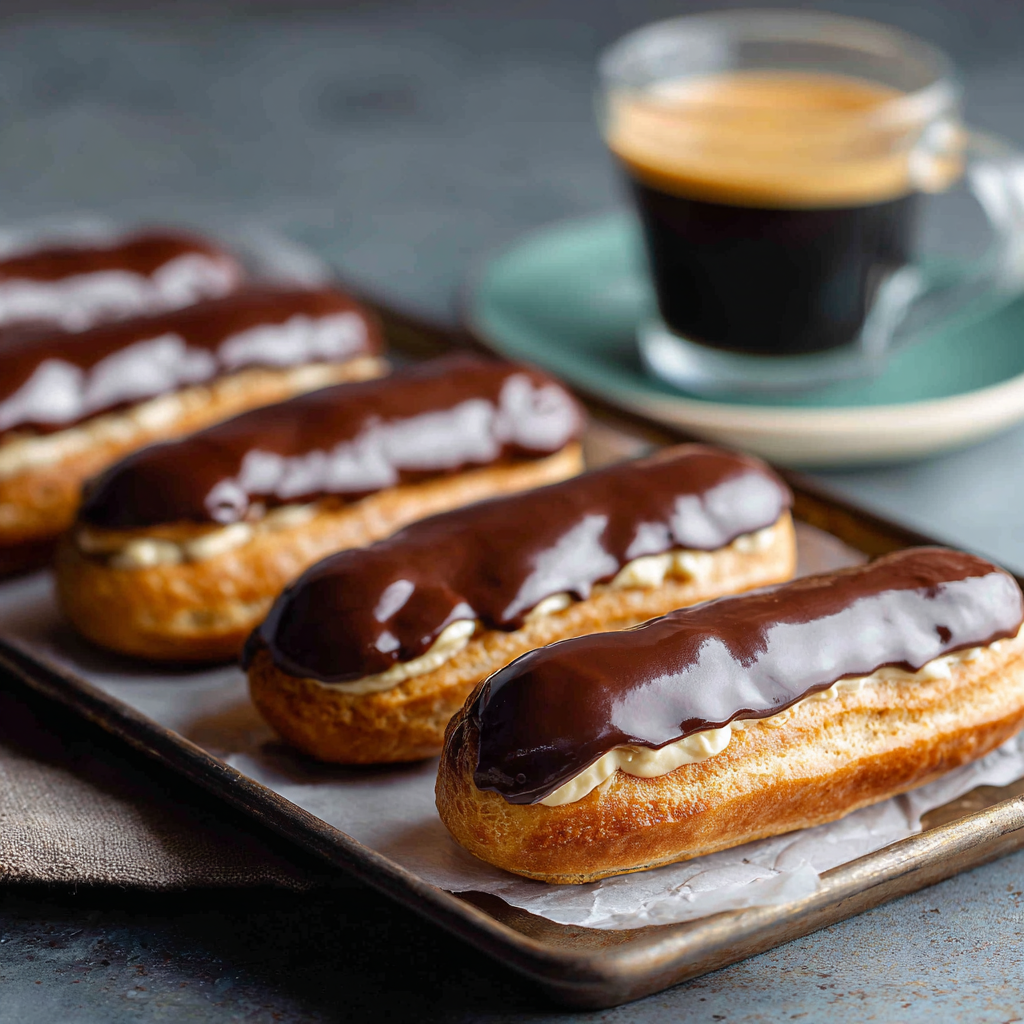
🍰 Mille-Feuille – The Refined Napoleon Pastry
History
Mille-Feuille, meaning “thousand sheets,” is a layered puff pastry with pastry cream. Also called Napoleon, it originated in the 17th century and remains a symbol of French precision.
Ingredients
- 3 sheets puff pastry
- 2 cups pastry cream
- Fondant or powdered sugar
Instructions
- Bake puff pastry at 400°F (200°C) until golden and crisp.
- Cut into rectangles; layer with pastry cream (3 pastry, 2 cream).
- Top with fondant, icing, or sugar; chill before slicing.
Tips & Variations
- Chocolate feathering on top for classic look.
- Fruit layers: strawberries or raspberries.
- Serrated knife for neat slices.
Drink Pairings
- Latte Macchiato – Layered coffee complements layered pastry.
- Chardonnay / Sparkling Apple Cider – Light and refreshing.
- Chamomile Tea – Gentle and floral.
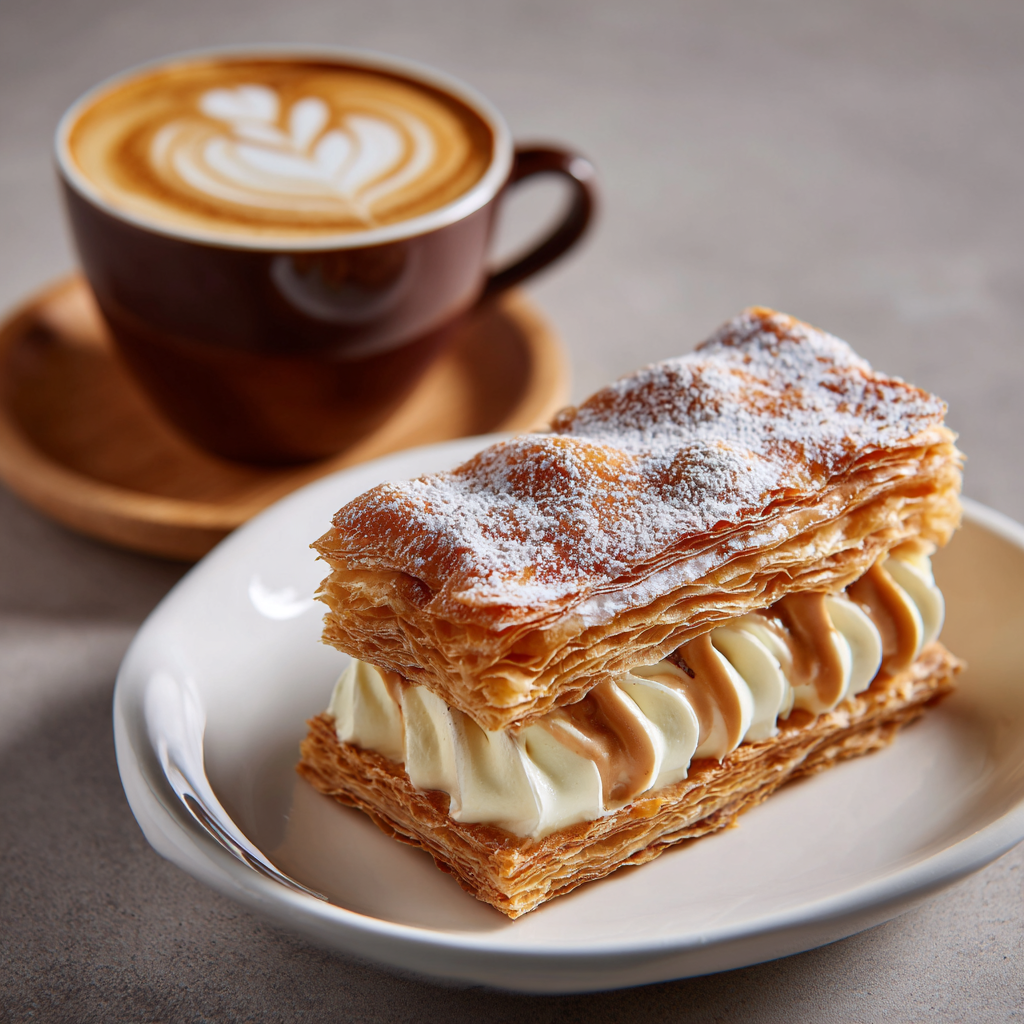
🍮 Opera Cake – A Parisian Coffee-Chocolate Dream
History
Created in 1950s Paris, the Opera Cake combines almond sponge, coffee buttercream, and chocolate ganache. Its precise layers and bold flavors make it a luxurious French dessert.
Ingredients
- Almond sponge cake (joconde)
- Coffee syrup
- Coffee buttercream
- Chocolate ganache
- Chocolate glaze
Instructions
- Bake almond sponge sheets; cool.
- Brush with coffee syrup.
- Layer sponge, buttercream, and ganache (5–6 layers).
- Cover with chocolate glaze; chill before slicing.
Tips & Variations
- Variations: Matcha, raspberry, hazelnut.
- Chill before slicing for neat layers.
- Serve cold with espresso.
Drink Pairings
- Espresso / Mocha – Enhances chocolate-coffee flavors.
- Cognac / Mocktail with Coffee Syrup – Classic Parisian after-dinner option.
- Hazelnut Latte – Nutty complement to ganache.
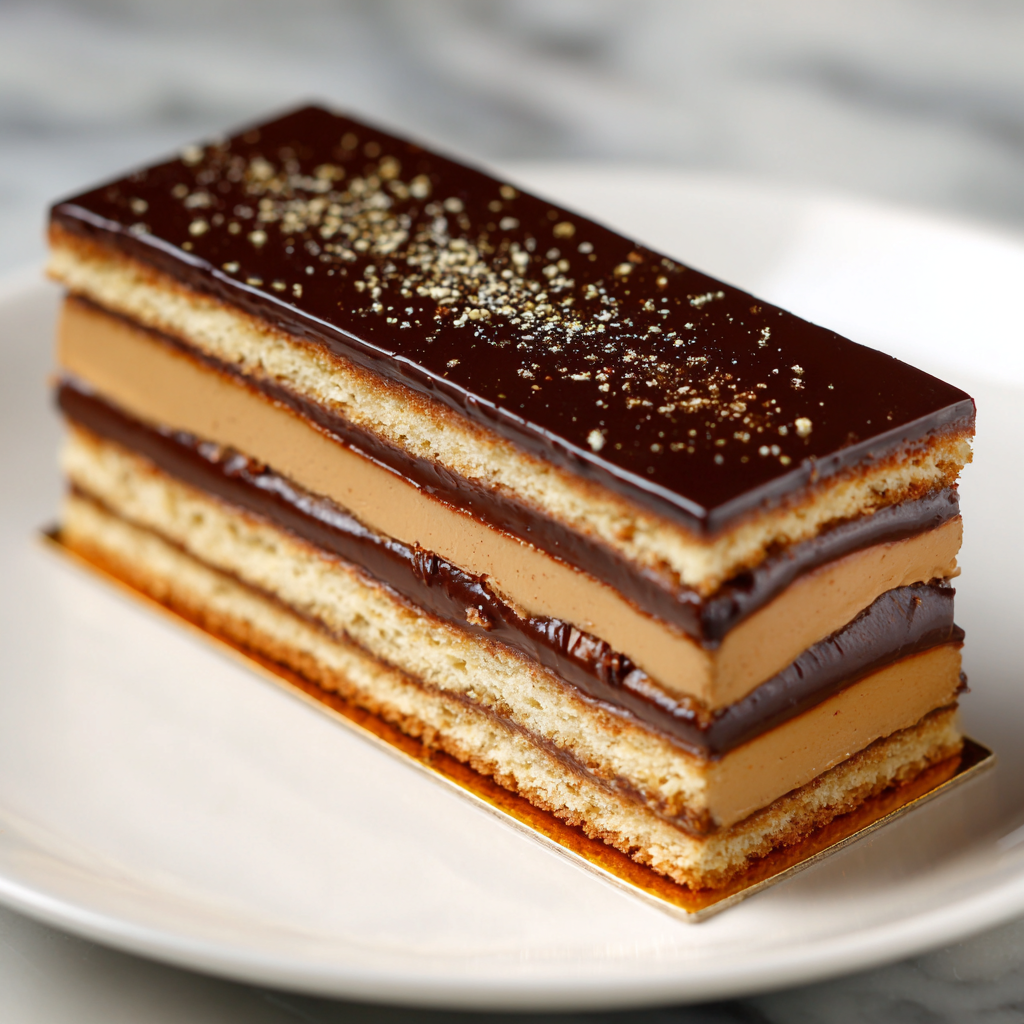
Why French Patisserie Recipes Are So Beloved
French pastries combine history, technique, and flavor. From croissants to Opera Cake, each recipe demonstrates French baking mastery. Drink pairings enhance the experience, allowing the enjoyment of flavors as Parisian cafés in
Conclusion: Mastering French Patisserie at Home
French patisserie recipes are more than just desserts—they are a journey into taste, culture, and craftsmanship. Each pastry, from the buttery layers of a croissant to the delicate almond shell of a macaron, embodies centuries of tradition, precision, and artistry. Baking these iconic French treats at home allows you to connect with this rich culinary heritage, bringing a piece of Parisian elegance to your own kitchen.
Mastering these recipes requires patience, practice, and attention to technique, but the rewards are extraordinary. The process teaches not only the art of baking but also the joy of creating something beautiful and delicious from scratch. By carefully pairing your pastries with complementary beverages, you elevate the experience even further. A café au lait with croissants awakens the senses with creamy warmth, while Earl Grey tea paired with macarons enhances delicate floral and fruity notes. Espresso alongside éclairs cuts through richness with bold intensity, latte macchiato with Mille-Feuille mirrors the pastry’s layered elegance, and a mocha with Opera Cake harmonizes coffee and chocolate in every bite.
These thoughtful pairings transform simple desserts into complete, indulgent French moments, turning an ordinary afternoon into a celebration of flavor and sophistication. Whether you’re entertaining guests, enjoying a quiet moment of self-indulgence, or exploring French baking as a hobby, these recipes and pairings invite you to savor the full sensory pleasure of patisserie.
Ultimately, mastering French patisserie at home is an invitation to embrace both the precision of French baking techniques and the art of pairing flavors and beverages. It’s an experience that delights the palate, nurtures creativity, and celebrates the timeless elegance of French cuisine. By combining your culinary skills with the perfect drinks, every bite becomes a small journey to Paris—an experience of luxury, tradition, and pure indulgence.
French patisserie is not just about baking; it’s about creating moments, memories, and the joy of experiencing France, one exquisite pastry at a time.
